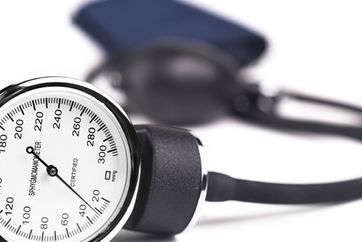Hypertension, low HDL amplify macrovascular risk in type 1 diabetes
Adults with type 1 diabetes who also have hypertension are more likely to develop retinopathy, nephropathy and macrovascular disease compared with those with normal blood pressure, and the addition of having obesity, hypertriglyceridemia or low HDL cholesterol can exacerbate the risk, according to findings published in the Journal of Diabetes and its Complications.
“There is abundant evidence that hyperglycemia is important in micro and macrovascular complications of [type 1 diabetes] and current guidelines have incorporated intensive glycemic control into practice,” Sandhya Bhattarai, MBBS, BSc, of the department of medicine at the Imperial College London, and colleagues wrote. “However, despite this, risk of complications remains significant, suggesting other factors may have a role.”
Using medical records from a clinical database, Bhattarai and colleagues examined BP, BMI, triglycerides and cholesterol levels in 920 adults with type 1 diabetes (median age, 33.9 years; 49% women) who visited one of two diabetes clinics in London. Using this data, the researchers established risk factors based on whether each participant had hypertension (BP 130/85 mm Hg), obesity (BMI 30 kg/m2), hypertriglyceridemia (triglyceride 1.7 mmol/L) or low HDL (< 1.03 mmol/L). They were also able to elucidate information about the development of retinopathy, nephropathy, neuropathy and macrovascular diseases such as ischemic heart disease, cerebrovascular accident and peripheral vascular disease, which were otherwise denoted as macrovascular complications.
Hypertension was the most prevalent of the risk factors in the cohort (74%), followed by obesity (17%), hypertriglyceridemia (16%) and low HDL (11%), according to the researchers, who noted that 39% of the participants also had retinopathy while 17% had nephropathy and 10% had neuropathy.

The researchers found that the odds of developing retinopathy (OR = 1.87; 95% CI, 1.24-2.8), nephropathy (OR = 5.88; 95% CI, 2.63-13.1) or macrovascular disease (OR = 2.82; 95% CI, 1.05-7.56) were all higher for those with hypertension compared with those without the condition. In addition, having low HDL increased the likelihood for nephropathy (OR = 2.24; 95% CI, 1.31-3.83) and macrovascular disease (OR = 2.71; 95% CI, 1.44-5.1) compared with those with higher levels.
Combining multiple factors made complication development more likely. Participants who had hypertension, obesity, hypertriglyceridemia and low HDL were 5.7 times more likely to develop retinopathy (OR = 5.7; 95% CI, 1.8-17.9), 43.7 times more likely to develop nephropathy (OR = 43.7 95% CI, 10.3-185), 13.9 times more likely to develop neuropathy (OR = 13.9; 95% CI, 3.2-60) and 11.9 times more likely to develop macrovascular disease (OR = 11.9; 955 CI, 2.4-60.1) than those without any of the factors. Having just one risk factor more than doubled the risk for retinopathy (OR = 2.4; 95% CI, 1.6-3.6), nephropathy (OR = 9.7; 955 CI, 3.5-26.9), neuropathy (OR = 4.1; 95% CI, 1.6-10.4) and macrovascular disease (OR = 5.1; 95% CI, 1.8-14.4), with the risk climbing with each additional factor.
“These observations draw attention to the continuing need for improvements in the risk factor profile in people with [type 1 diabetes]. Interestingly, glycemia, assessed by HbA1c concentrations, showed no associations with complications,” the researchers wrote. “The contrast between the lack of association between complications and HbA1c and the strong associations apparent for hypertension, low HDL-[cholesterol] and number of risk factors does suggest that a greater focus on the management of risk factors other than glycemia, especially blood pressure and lipids, might be beneficial.” – by Phil Neuffer
Disclosures: The authors report no relevant financial disclosures.
